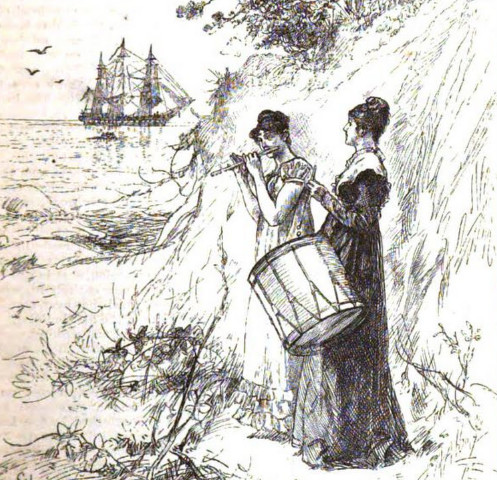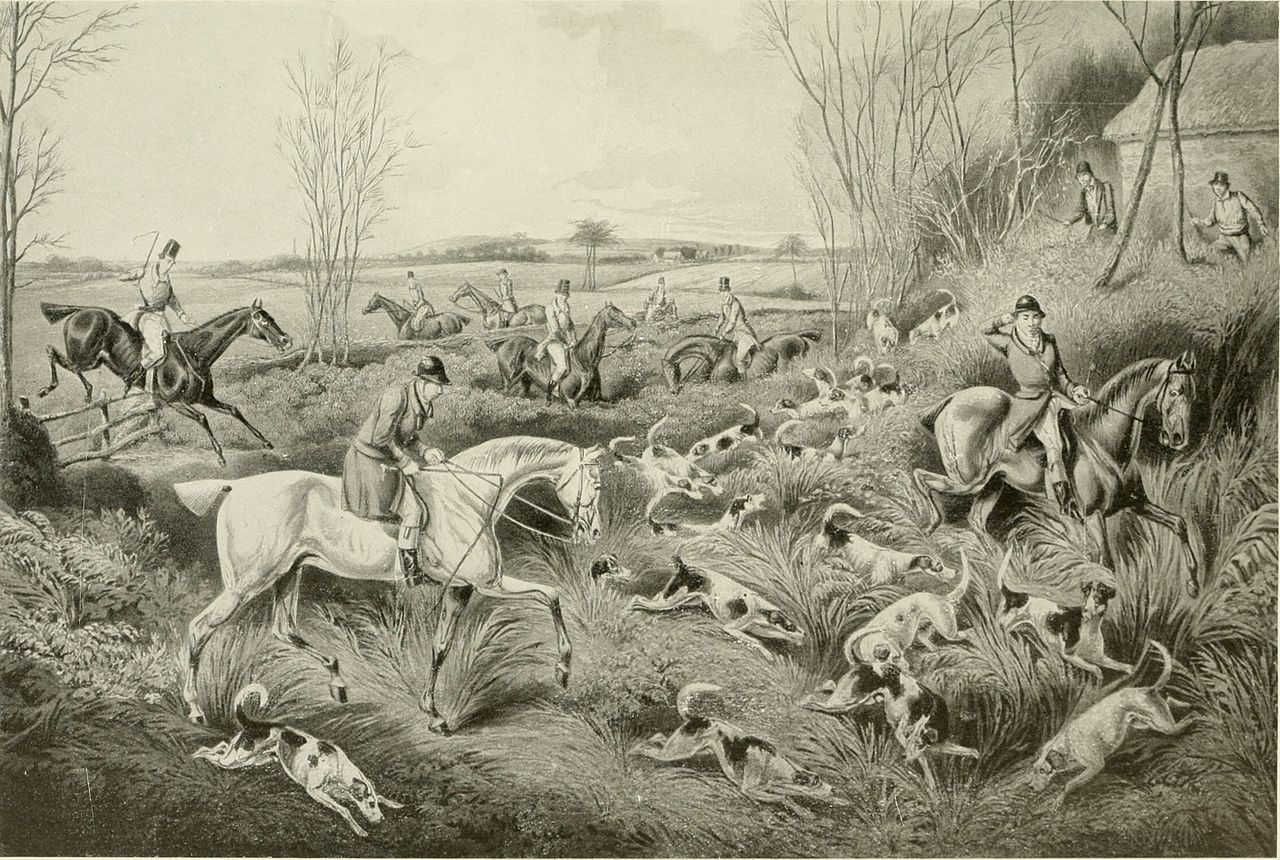(Sponsored by the Thai pet supply company SmartHeart in December 2017.)
Podcast Episode 230: Lateral Thinking Puzzles

Here are six new lateral thinking puzzles — play along with us as we try to untangle some perplexing situations using yes-or-no questions.
Duet
In 1924 cellist Beatrice Harrison was playing to the birds in her Oxted garden when “I suddenly stopped and thought, ‘Why should I be the only being to have the joy of hearing the nightingale and the cello sing together? If only it were possible for people, even at the other end of the world, to hear him, those who have never heard the most exquisite bird sing.'”
The BBC resisted her idea at first — no wild bird had ever been broadcast before — but on May 19 they arranged a live performance in the garden, and “the nightingale burst into song as I continued to play. … I shall never forget his voice that night, or his trills, nor the way he followed the cello so blissfully. It was a miracle to have caught his song and to know that it was going, with the cello, to the ends of the earth.”
The broadcast was heard by about a million people; those who had radios relayed it by telephone to friends who didn’t. She played again the following week, and again the following year, and received thousands of letters, some addressed to “The Lady of the Nightingales” or “The Garden of the Nightingales, England.”
The only listener who remained unimpressed was her gardener. “I loves your music, Miss,” he told her, “but I do wish it didn’t attract them birds the way it do. They eats up all the fruit, something cruel.”
(From her 1985 autobiography, The Cello and the Nightingales.)
An Army of Two

Doubtful but interesting: In June 1814 two British warships marauded Scituate Harbor in Massachusetts, burning and capturing American vessels. Militia member Simeon Bates fired cannon shots after them from his lighthouse on Cedar Point. When a ship returned in September, only Bates’ wife and daughters were at the lighthouse, so 21-year-old Rebecca grabbed 17-year-old Abigail, took up a fife and drum that the militia stored there, ran behind a range of cedars, and played “Yankee Doodle” to suggest that the militia was returning. The British withdrew.
The story is supported only by the two sisters’ recollection, and Rebecca identified the ship as La Hogue, which turns out not to have been near Scituate at the time. “But Rebecca might have simply misidentified the ship, and she and her sister swore the story was true, even signing affidavits to that effect,” writes Eric Jay Dolin in Brilliant Beacons. “Many locals, siding with the two intrepid sisters, believed it too.”
(“Along the South Shore,” Harper’s New Monthly Magazine 337:57 [June 1878], 1-14.)
Two Quizzes
King William’s College, on the Isle of Man, has posted the 2018 edition of its General Knowledge Paper, “The World’s Most Difficult Quiz.”
“The King William’s College General Knowledge Paper (GKP) has been frustrating and intriguing a select group of quiz connoisseurs since 1904. The paper consists of 18 sets of 10 questions, each set covering a particular theme, which in many cases is far from obvious. Cracking the theme has long been one of the attractions to devotees of the GKP.”
Answers will be published on the school website at the end of January. A warning: “A Latin phrase is always printed at the top of the quiz: Scire ubi aliquid invenire possis ea demum maxima pars eruditionis est. Freely translated, this means ‘The greatest part of knowledge is knowing where to find something’. However, be warned — using Google or a similar search engine may not always deliver the expected results!”
At the same time, the Royal Statistical Society has released its annual Christmas Quiz.
“For the last quarter-century, the Royal Statistical Society has published a fiendishly difficult Christmas quiz to entertain puzzle fans over the festive break – and this year’s special 25th anniversary edition, devised by Dr Tim Paulden, is sure to get the cogs spinning after a glass or two of mulled wine. Cracking the 15 problems below will require a potent mix of general knowledge, logic, and lateral thinking – but, as usual, no specialist mathematical knowledge is needed.” The entrant or team that scores the most points wins a subscription to the society’s magazine, Significance.
(Via MetaFilter.)
Oh
These three riddles have the same answer. What is it?
He who with his hands puts it together will not be poor, and he who buys it, does not wish to use it, and he who uses it, does not know it: now you guess what it is.
— Johannes Secundus (1511-1536)
There was a man bespake a thing
Which when the owner home did bring,
He that made it did refuse it:
And he that brought it would not use it,
And he that hath it doth not know
Whether he hath it yea or no.
— Sir John Davies (1569-1626)
There was a man who bought a thing,
The thing he bought, he did not want,
The man who sold it, could not use it,
The man who used it, did not know it.
— Every Other Saturday: A Journal of Select Reading, New and Old, April 26, 1884
A Surprise Guest
Unquote

“The world may be divided into people that read, people that write, people that think, and fox-hunters.” — William Shenstone, “On Writing and Books,” 1769
Odd at Heart
A problem proposed by Charles W. Trigg in the Spring 1970 issue of the Pi Mu Epsilon Journal (Volume 5, Number 4):
The digits 1-9 can be arranged in a square array so that the digits in no column, row, or long diagonal appear in order of magnitude:

Prove that, however this is done, the central digit must be odd.
Sound and Sense
In 1929 linguist Edward Sapir made up two words, mal and mil, and told 500 subjects that one of them meant “large table” and the other “small table.” When asked to tell which was which, 80 percent responded that mal meant “large table” and mil meant “small table” — suggesting that different vowels evoke different sizes.
Four years later, Stanley Newman extended the experiment to include all the vowels. He placed them in a sequence that he said English speakers associate with increasing sizes: i (as in ill), e (met), ae (hat), a (ah), u (moon), o (hole), and so on.
Interestingly, this ranking also reflects the size of the mouth shape needed to pronounce each vowel. “In other words,” writes Peter Farb in Word Play, “the psychological awareness that speakers of English have about what the vowels convey matches the anatomical means of producing them.”
(Edward Sapir, “A Study in Phonetic Symbolism,” Journal of Experimental Psychology 12:3 [1929], 225; Stanley S. Newman, “Further Experiments in Phonetic Symbolism,” American Journal of Psychology 45:1 [1933], 53-75.)
